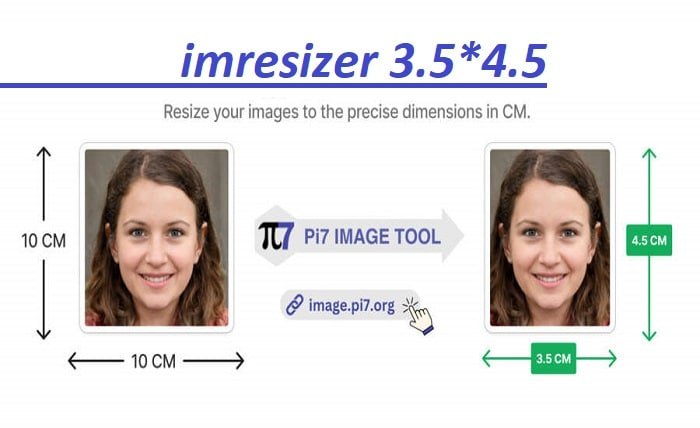In the rapidly evolving digital landscape, businesses continuously seek innovative ways to enhance their online presence and streamline operations. Web to XYZ represents a pivotal transformation strategy, enabling organizations to convert web-based assets, data, and functionalities into XYZ solutions tailored to their specific needs. This comprehensive guide delves into the essence of Web to XYZ, exploring its significance, applications, and the myriad benefits it offers to modern enterprises. Whether you’re a startup aiming to optimize your web infrastructure or an established company looking to integrate advanced XYZ technologies, understanding Web to XYZ is crucial for staying competitive and achieving sustainable growth.
The Concept of Web to XYZ
At its core, Web to XYZ involves the process of transforming web-based data, applications, or services into XYZ formats or platforms that better align with an organization’s objectives. This transformation can encompass various aspects, including data migration, application integration, and workflow automation. By leveraging Web to XYZ, businesses can enhance their operational efficiency, improve data accuracy, and facilitate seamless communication between different systems. This section explores the foundational principles of Web to XYZ, highlighting its role in bridging the gap between web technologies and specialized XYZ solutions.
Benefits of Implementing Web to XYZ
Adopting Web to XYZ strategies offers a multitude of benefits for businesses across diverse industries. One of the primary advantages is the ability to streamline operations by integrating web-based applications with XYZ platforms, resulting in increased productivity and reduced manual intervention. Additionally, Web to XYZ enhances data consistency and accuracy by automating data transfers and minimizing the risk of human error. Organizations also benefit from improved scalability, as Web to XYZ solutions can easily adapt to growing business needs. Furthermore, this transformation facilitates better decision-making through enhanced data analytics and reporting capabilities, ultimately driving business growth and innovation.
Key Tools and Technologies for Web to XYZ
Successfully implementing Web to XYZ requires the utilization of robust tools and technologies that facilitate seamless transformation and integration. Key tools include API management platforms, which enable secure and efficient data exchange between the web and XYZ systems. Middleware solutions play a crucial role in bridging disparate applications, ensuring smooth communication and data flow. Additionally, data integration tools are essential for consolidating and harmonizing data from various sources during the Web to XYZ process. Emerging technologies such as artificial intelligence and machine learning further enhance Web to XYZ by automating complex tasks and providing predictive analytics. This section delves into the essential tools and technologies that empower businesses to execute effective Web-to XYZ transformations.
Step-by-Step Guide to Web to XYZ Transformation
Embarking on a Web to XYZ transformation requires a structured approach to ensure success and minimize potential challenges. This step-by-step guide outlines the essential phases of the transformation process:
- Assessment and Planning: Evaluate existing web assets and identify objectives for the Web to XYZ transformation.
- Data Mapping and Migration: Define data structures and migrate relevant data from web platforms to XYZ systems.
- Integration Setup: Configure APIs and middleware to establish seamless communication between the web and XYZ applications.
- Testing and Validation: Conduct thorough testing to ensure data integrity and system functionality post-transformation.
- Deployment and Monitoring: Launch the Web to XYZ solution and continuously monitor its performance to address any issues promptly.
Following this structured approach to Web to XYZ ensures a smooth transition, minimizing disruptions and maximizing the benefits of the transformation.
Common Challenges in Web to XYZ and How to Overcome Them
While Web to XYZ offers significant advantages, the transformation process can present several challenges. One common hurdle is data compatibility, where discrepancies between web and XYZ data formats can impede seamless integration. To overcome this, businesses should implement robust data mapping and cleansing strategies before initiating the transformation. Another challenge is ensuring system security during the Web to XYZ process, which can be addressed by employing advanced security protocols and regular audits. Additionally, managing the complexity of integrating multiple applications requires careful planning and the use of reliable integration tools. By proactively addressing these challenges, organizations can achieve a successful Web to XYZ transformation with minimal setbacks.
Real-World Applications of Web to XYZ
Web to XYZ transformations have been successfully implemented across various industries, showcasing their versatility and impact. In the healthcare sector, Web to XYZ enables the integration of web-based patient management systems with XYZ medical devices, enhancing patient care and operational efficiency. In e-commerce, businesses leverage Web to XYZ to connect online storefronts with XYZ inventory and logistics platforms, ensuring real-time stock updates and streamlined order fulfillment. Additionally, in the financial services industry, Web to XYZ facilitates the seamless integration of web-based banking applications with XYZ security systems, enhancing data protection and compliance. These real-world applications underscore the transformative potential of Web to XYZ across different domains.
Best Practices for Successful Web to XYZ Transformation
Achieving a successful Web to XYZ transformation requires adherence to best practices that ensure efficiency, scalability, and sustainability. First, organizations should conduct a comprehensive needs assessment to clearly define their objectives and requirements for the transformation. Second, selecting the right tools and technologies is crucial for facilitating seamless integration and data migration. Third, involving key stakeholders and fostering cross-functional collaboration can enhance the effectiveness of the Web to XYZ process. Additionally, implementing robust testing protocols ensures that the transformed systems operate smoothly and reliably. Finally, continuous monitoring and optimization post-transformation help maintain system performance and address any emerging issues promptly. By following these best practices, businesses can maximize the benefits of Web to XYZ transformations.
The Future of Web to XYZ: Trends and Innovations
As technology continues to advance, the landscape of Web to XYZ transformations is poised for significant evolution. Emerging trends such as the integration of artificial intelligence and machine learning are set to enhance the capabilities of Web to XYZ, enabling more intelligent data processing and predictive analytics. Additionally, the rise of cloud computing and edge computing will facilitate more flexible and scalable Web-to XYZ solutions, accommodating the growing demands of modern businesses. Innovations in API development and microservices architecture will further streamline the integration process, making Web to XYZ more efficient and accessible. Staying abreast of these trends and innovations is essential for organizations looking to leverage the full potential of Web to XYZ in the future.
Case Studies: Successful Web to XYZ Implementations
Examining case studies of successful Web to XYZ implementations provides valuable insights into the practical applications and benefits of this transformation strategy. For instance, a leading retail company implemented Web to XYZ to integrate its online sales platform with an XYZ inventory management system. This integration resulted in real-time inventory updates, reduced stockouts, and improved customer satisfaction. Similarly, a healthcare provider utilized Web to XYZ to connect its web-based patient portal with an XYZ electronic health record (EHR) system, enhancing data accuracy and patient care. These case studies illustrate the tangible benefits of Web to XYZ, highlighting its potential to drive operational excellence and business growth across various sectors.
Choosing the Right Partners for Your Web to XYZ Journey
Embarking on a Web to XYZ transformation often requires collaboration with experienced partners who can provide the necessary expertise and support. Selecting the right partners involves evaluating their technical proficiency, industry experience, and track record of successful Web to XYZ projects. It’s essential to partner with organizations that understand your specific business needs and can tailor their solutions accordingly. Additionally, choosing partners who prioritize security and compliance ensures that your Web to XYZ transformation adheres to industry standards and regulations. By partnering with the right experts, businesses can navigate the complexities of Web to XYZ with confidence and achieve their transformation goals effectively.
Conclusion
Web to XYZ represents a transformative approach for businesses seeking to optimize their online strategies and integrate advanced technologies into their operations. By converting web-based assets, data, and applications into XYZ solutions, organizations can enhance efficiency, improve data accuracy, and drive sustainable growth. This comprehensive guide has explored the concept of Web to XYZ, its benefits, key tools, implementation strategies, and real-world applications, providing a roadmap for businesses to successfully navigate their transformation journey. Embracing Web to XYZ not only positions your organization at the forefront of technological innovation but also ensures a competitive edge in an increasingly digital marketplace. Invest in Web to XYZ today and unlock new opportunities for success and excellence in your business endeavors.
FAQ
1. What does Web to XYZ mean?
Web to XYZ refers to the process of transforming web-based data, applications, or services into XYZ formats or platforms. This transformation enables seamless integration, enhanced functionality, and improved operational efficiency by bridging the gap between web technologies and specialized XYZ solutions.
2. What are the main benefits of implementing Web to XYZ?
Implementing Web to XYZ offers several benefits, including streamlined operations, improved data accuracy, enhanced scalability, and better decision-making through advanced analytics. Additionally, it facilitates seamless integration between different systems, reduces manual intervention, and supports business growth and innovation.
3. What tools are essential for a successful Web to XYZ transformation?
Key tools for a successful Web to XYZ transformation include API management platforms, middleware solutions, data integration tools, and emerging technologies like artificial intelligence and machine learning. These tools enable secure data exchange, efficient communication between systems, and automated data processing.
4. What industries can benefit the most from Web to XYZ?
Various industries can benefit from Web to XYZ transformations, including healthcare, e-commerce, financial services, retail, and manufacturing. Any sector that relies on web-based applications and seeks to integrate them with specialized XYZ platforms can leverage Web to XYZ to enhance their operations and achieve better outcomes.
5. How can businesses ensure the security of their Web to XYZ transformations?
Businesses can ensure the security of their Web to XYZ transformations by implementing robust security protocols, conducting regular security audits, and partnering with experienced and reputable service providers. Additionally, adhering to industry standards and compliance requirements helps protect data integrity and prevent unauthorized access during the transformation process.





